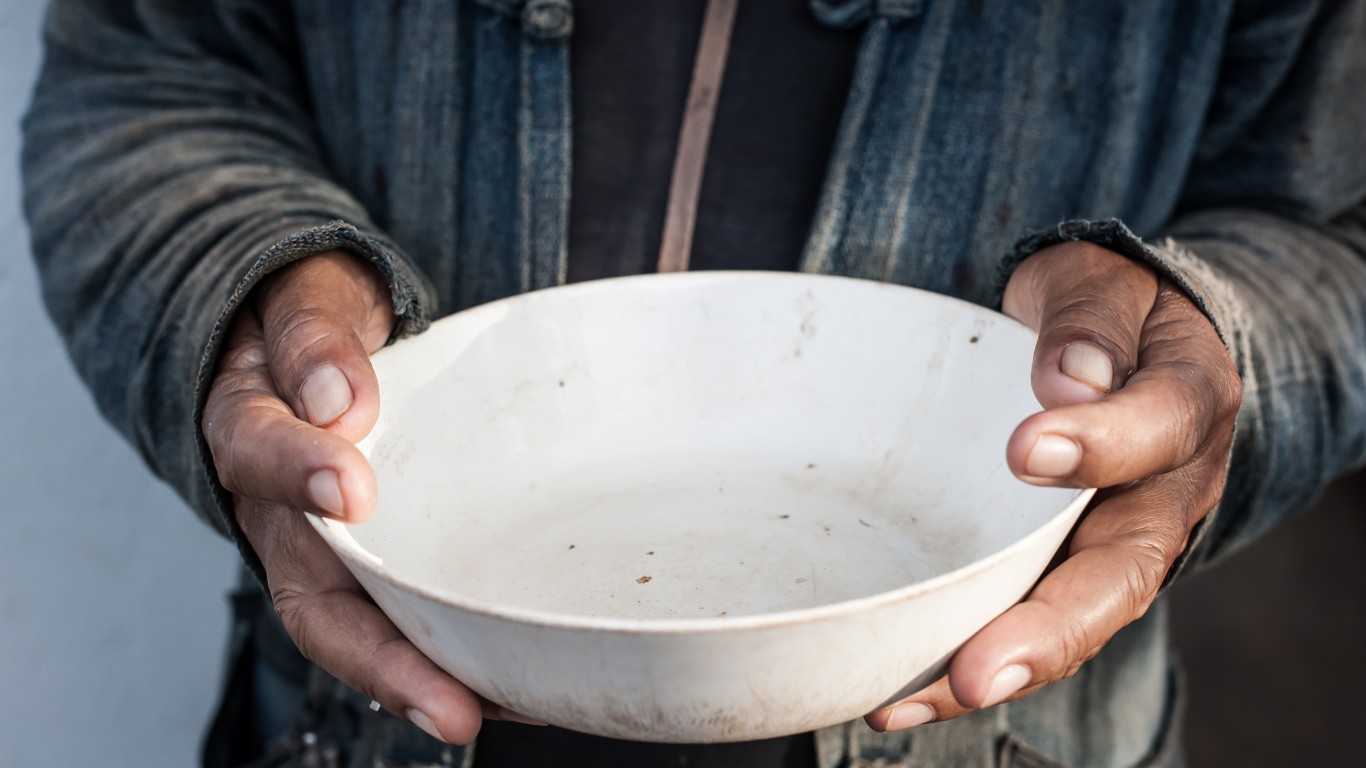
The COVID-19 pandemic is making a growing global hunger crisis even worse. At the end of 2019, 821 million people, more than 10% of the world’s total population, were estimated to be food insecure. U.S. hunger-relief organization Feeding America estimates 54 million Americans will face food insecurity this year, including 18 million children.
While that is an almost unbelievable number in the world’s richest country, the situation is far worse among the world’s poorest nations. The coronavirus outbreak, combined with conflicts, rising inequality and the effects of climate change threaten an “already-broken global food system to its foundation, leaving millions more on the brink of starvation,” according to a new report from Oxfam, a global organization founded in Great Britain in 1942 with the goal of ending “the injustice of poverty.”
Crisis-level hunger is expected to increase by more than 80% year over year in 2020, according to a report from the U.N. World Food Programme, from 149 million last year to 270 million by the end of this year. As many as 12,000 people every day could die from hunger associated with COVID-19 by the end of the year, with up to half of them children.
The impact of the pandemic has cost some 305 million full-time jobs already, according to the Oxfam report, and could result in up to 500 million people falling into poverty. The loss of jobs in the informal economy of day laborers, street vendors and domestic workers that employs 61% of workers globally is not backstopped by programs like unemployment insurance.
Many residents of the world’s poorest countries also depend on remittances from family members who work abroad and send money home. Last year, some $554 billion in remittances provided a lifeline to millions of families. That total is expected to drop by 20% this year due to the pandemic.
Humanitarian aid is declining, according to Oxfam, with just 24% of the $7.3 billion needed for the COVID-19 Global Humanitarian Response Plan having been funded so far.
Oxfam also notes that 1.7 billion small-scale farmers and other food producers who provide 70% of the food for people in Asia and sub-Saharan Africa cannot produce enough food or earn enough income to escape hunger and poverty.
Climate change exacerbates food insecurity as extreme weather events such as flooding or drought make food production even less predictable. A locust invasion in the Middle East, Central and East Africa, and parts of Asia have pushed 6 million people into crisis levels of hunger.
Rising inequality also extracts a toll, according to Oxfam: “While nearly half of humanity scrape by on less than $5.50 a day, the world’s 2,200 billionaires have more wealth than 4.6 billion people combined.” The poor, who spend a far larger proportion of their income to buy food, are particularly sensitive to even small increases in the price of food.
Armed conflict, notes Oxfam, is both a cause and a consequence of food shortages: “60% of the world’s 821 million people who are food insecure, and nearly 80% of stunted children, live in countries affected by conflict.”
The following table shows the countries (or region, in the case of the Sahel) with the largest number (along with the percentage the total population) of people facing crisis-level hunger, the country’s level of health preparedness out of 195 world countries, and the number of confirmed COVID-19 cases.
The West African Sahel region covers Burkina Faso, Mali, Mauritania, Niger, Chad, Senegal and Nigeria.
Confirmed cases are as of June 22, 2020. Source: John Hopkins University.
| Location | Number of people (in millions) facing crisis-level hunger or worse in 2019 | Percentage of population facing crisis level hunger or worse in 2019 | Global health preparedness ranking (out of 195 countries) | Confirmed COVID-19 cases |
|---|---|---|---|---|
| Yemen | 15.9 | 53% | 190 | 941 |
| DRC | 15.6 | 26% | 161 | 5,826 |
| Afghanistan | 11.3 | 37% | 130 | 29,143 |
| Venezuela | 9.3 | 32% | 176 | 3,917 |
| West African Sahel | 9.8 | 5% | − | 33,846 |
| Ethiopia | 8.0 | 27% | 84 | 4,532 |
| South Sudan | 7.0 | 61% | 180 | 1,892 |
| Syria | 6.6 | 36% | 188 | 204 |
| Sudan | 5.9 | 14% | 163 | 8,580 |
| Haiti | 3.7 | 35% | 138 | 5,211 |
In the United States, the country’s poorest cities may be particularly susceptible to both cases of COVID-19 and hunger.
Take Charge of Your Retirement: Find the Right Financial Advisor For You in Minutes (Sponsor)
Retirement planning doesn’t have to feel overwhelming. The key is finding professional guidance—and we’ve made it easier than ever for you to connect with the right financial advisor for your unique needs.
Here’s how it works:
1️ Answer a Few Simple Questions
Tell us a bit about your goals and preferences—it only takes a few minutes!
2️ Get Your Top Advisor Matches
This tool matches you with qualified advisors who specialize in helping people like you achieve financial success.
3️ Choose Your Best Fit
Review their profiles, schedule an introductory meeting, and select the advisor who feels right for you.
Why wait? Start building the retirement you’ve always dreamed of. Click here to get started today!
Thank you for reading! Have some feedback for us?
Contact the 24/7 Wall St. editorial team.



